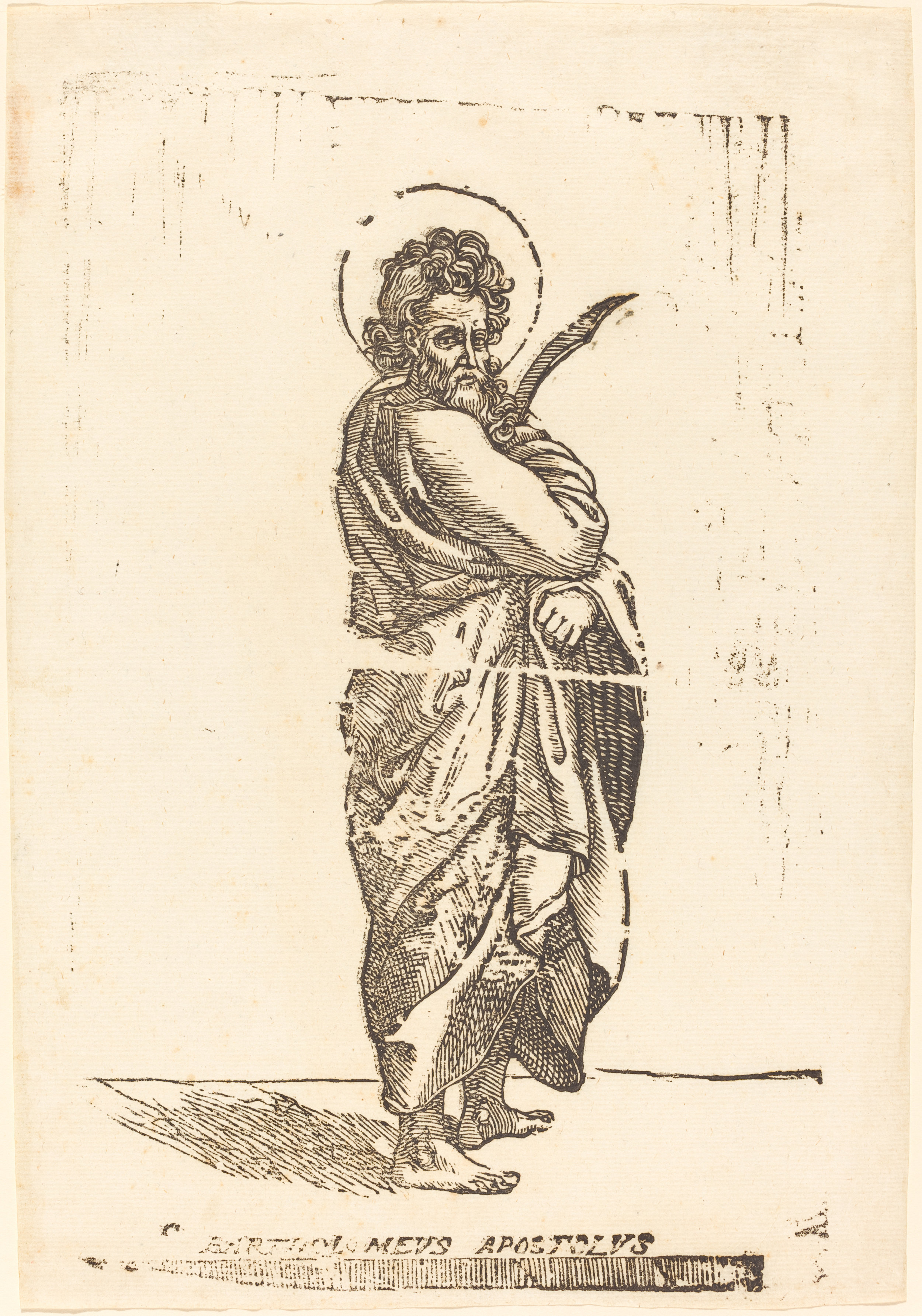FRENCH SCHOOL, c. 1700,
after JACQUES STELLA
(Lyon 1596 – 1657 Paris)
Four Bronze Reliefs of the Apostles
Saint John the Evangelist
10 ¾ inches (27.3 cm) high
Incised, on the back: 3
Stamped, on the back: JOANNES
Saint Bartholomew
10 ¾ inches (27.3 cm) high
Incised, on the back: 8
Stamped, on the back: BARTHOLOMOEUS
Saint Peter
11 inches (27.9 cm) high
Incised, on the back: 1
Stamped, on the back: PETRUS
Saint Matthew
10 7/8 inches (27.6 cm) high
Incised, on the back: 6(?)
Stamped, on the back: JACOBUS MAJ
Provenance:
Private Collection Lyon
Supporting Literature:
André Félibien, Entretiens sur les vies et sur les ouvrages des plus excellens peintres anciens et modernes, Paris, 1725, vol. 4, pp. 406-414.
Sylvain Laveissiere, Léna Widerkehr, Jacques Stella (1596-1657), exh. cat., Musée des Beaux-Arts, Lyon, 17 November 2006-19 February 2007, and Musée des Augustins, Toulouse, 17 march-18 June 2007), Paris-Lyon-Toulouse, 2006.
Jacques Thuillier, Jacques Stella, 1596-1657, Metz, 2006.
These four reliefs with images of Saints John the Evangelist, Bartholomew, Peter, and Matthew were designed after woodcuts of the twelve apostles (figs. 1-4) by the French painter Jacques Stella, a series of which is in the collection of the National Gallery of Art, Washington, DC (inv. 1945.1.18-1945.1.29). Numbered on the back, the four reliefs also appear to have been part of a series of twelve. Although the reverse of one of the reliefs is stamped JACOBUS MAJ, suggesting that it represents Saint James Major, the figure in the relief bears none of James’s traditional attributes, such as the staff and shell, but instead corresponds to the figure of Saint Matthew in Stella’s woodcut, in which the tax collector turned apostle is shown holding a bag of coins.
The original context of the four reliefs is unknown, but it seems likely that they once formed part of a decorative ensemble in a church, possibly an elaborate architectural altarpiece like that of the main altar of Saint-Jean de Troyes, conceived by François Girardon in 1691, which features bronze reliefs, or that of the more modest parochial church of Saint-Etienne in Seix of 1762, which includes, on the bases of its large Solomonic columns, gilded stucco reliefs of the four evangelists, whose contours stand out against a darker background. Our reliefs’ connection to Jacques Stella and their recent provenance suggest that they were once in a church in the artist’s hometown of Lyon.
Fig. 1. Jacques Stella, Saint John the Evangelist, woodcut, National Gallery of Art, Washington, DC
Fig. 2. Jacques Stella, Saint Bartholomew, woodcut, National Gallery of Art, Washington, DC
Fig. 3. Jacques Stella, Saint Peter, woodcut, National Gallery of Art, Washington, DC
Fig. 4. Jacques Stella, Saint Matthew, woodcut, National Gallery of Art, Washington, DC
Jacques Stella was born into an artistic family: his father, François Stella (Mechelen 1563-1605 Lyon) and his brother François the Younger were both painters; his sister Madeleine, who married the goldsmith Étienne Bouzonnet, was herself a sculptor and the mother of Antoine, Claudine, Antoinette and Françoise, all of whom trained as artists and worked with their uncle Jacques.
Jacques studied painting in Lyon before departing for Italy in 1617. He worked at the court of Duke Cosimo II de’ Medici in Florence from 1617 until the latter’s death in 1621. He then moved to Rome, where he worked for Pope Urban VIII and was influenced by the classicism of the painter Nicolas Poussin (1594-1665), who became a close friend. Stella returned to Lyon briefly in 1634 before moving to Paris, where, after an introduction by Cardinal Richelieu, he was made painter to King Louis XIII. Major commissions include the decoration of the chapelle Saint-Louis at the château de Saint-Germain-en-Laye and the choir of the church of Saint-Francois-Xavier (1641-42), with Simon Vouet and Nicolas Poussin. Stella lived in Paris until his death in 1657 but must have returned to Lyon periodically, for in 1688 André Félibien wrote that there were many altarpieces there by him, such as The Madonna and Child Appearing to Saint Elizabeth of Hungary, Saint John the Evangelist and Saint Francis, signed and dated 1654, and now in the church of Saint-Symphorien-de-Montreuil, Versailles. It is possible that our apostle reliefs once adorned one of Stella’s Lyonnaise altarpieces, now dismantled.




